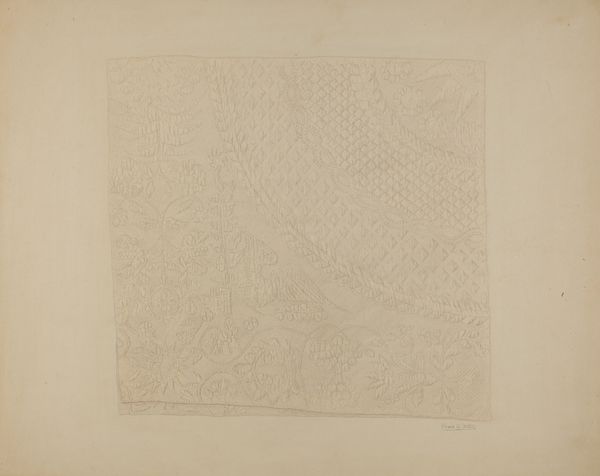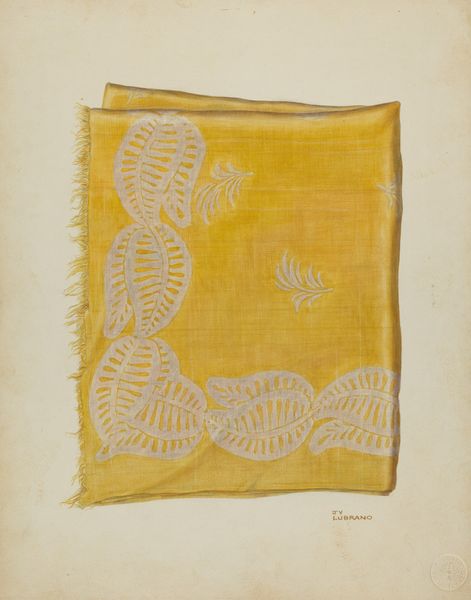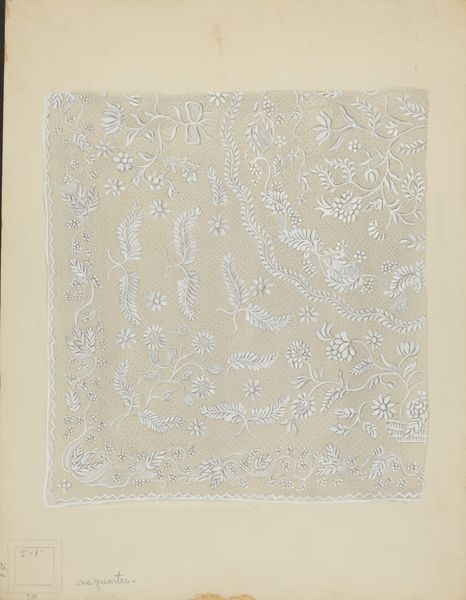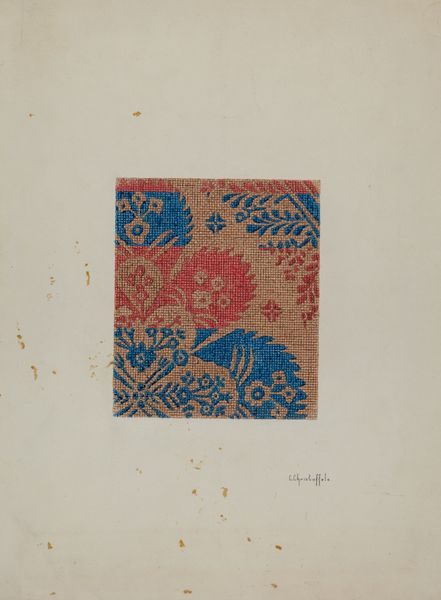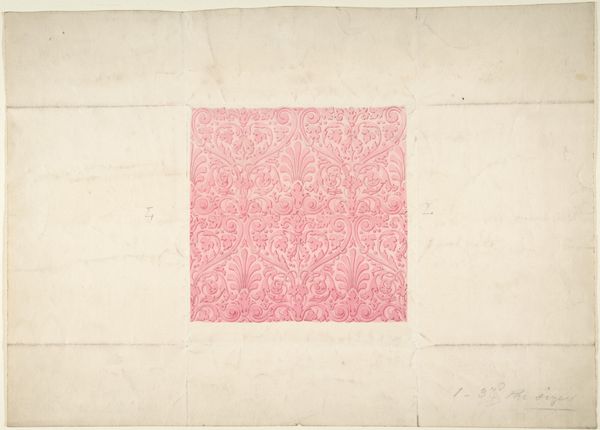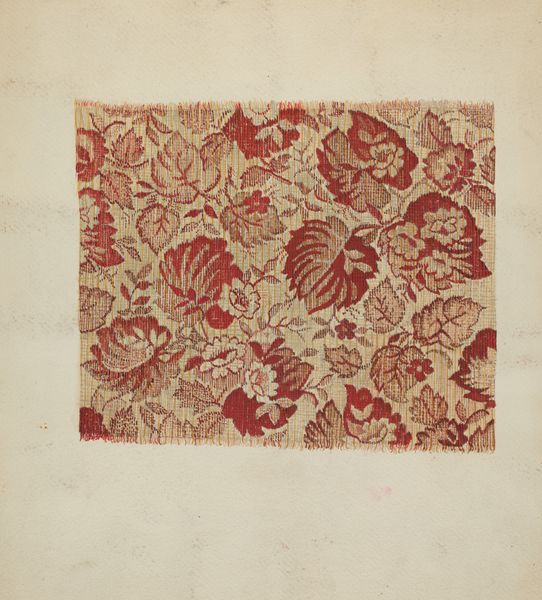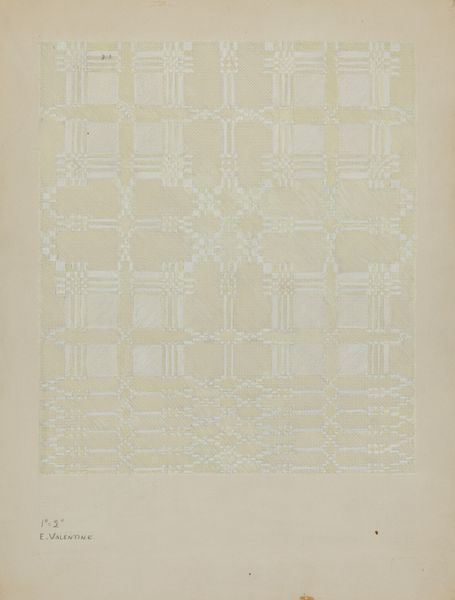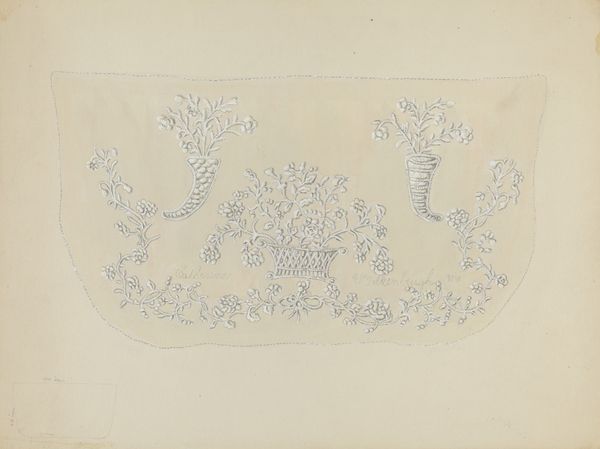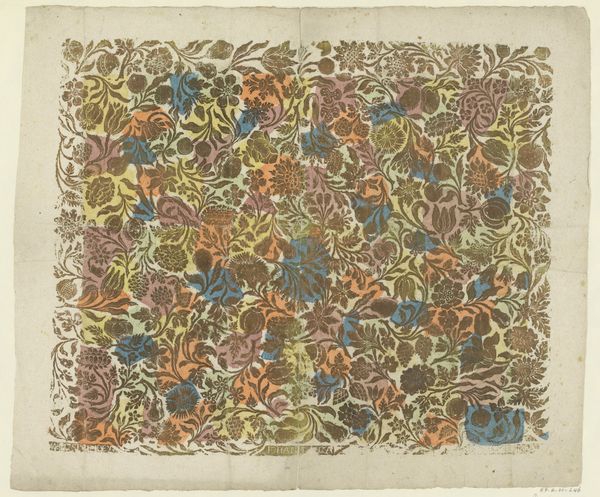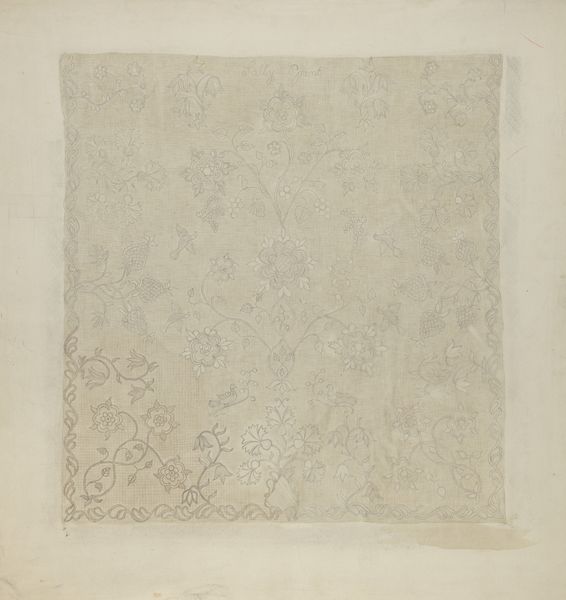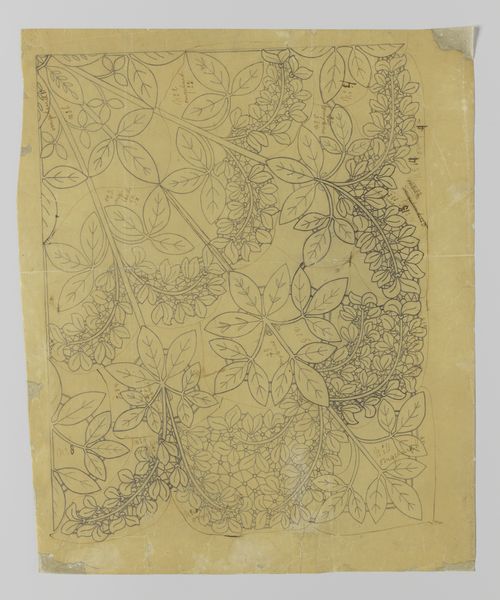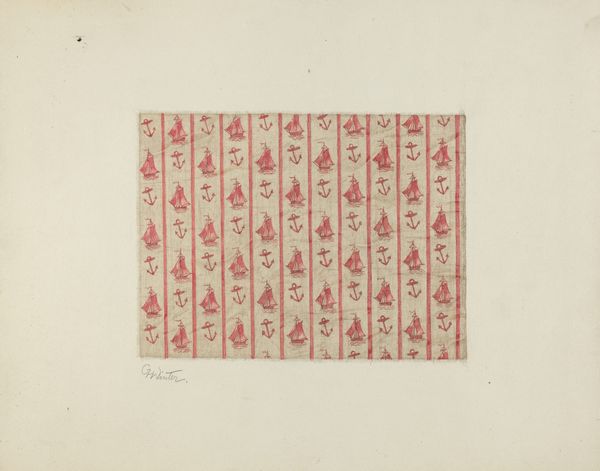
drawing, coloured-pencil, paper
#
drawing
#
coloured-pencil
#
water colours
#
paper
#
watercolor
Dimensions: overall: 27.9 x 35.5 cm (11 x 14 in.)
Copyright: National Gallery of Art: CC0 1.0
Curator: This artwork is called "Quilting on Silk (Detail)," and it dates to about 1940. It appears to be a colored-pencil drawing on paper. The artist is Edward Jewett. Editor: It's immediately striking, isn’t it? That honeyed yellow and the intricate layering of pattern upon pattern evoke such a sense of domestic comfort. It's a snippet of lived space, made precious through careful detail. Curator: Indeed. Notice how Jewett constructs a series of interwoven patterns, employing subtle shifts in tonality to articulate depth and texture. The upper register features a crisply defined diamond grid, while below, sinuous floral arabesques dance along the lower field. This repetition can be analyzed to reveal Jewett’s meticulous dedication to mirroring forms, both a rigid lattice of geometry with organic freedom. Editor: I wonder what function such drawings played for Jewett and perhaps the intended audience. In the 1940s, textiles were deeply connected to home economies and social expressions. Could this detail be documentation or simply aspiration? Or perhaps Jewett was suggesting textiles are works of art equal to painting or sculpture? Curator: Interesting points, given that "pattern and decoration," an art movement it presages, would challenge conventional art hierarchies. However, it's impossible to ignore how these compositional divisions operate structurally: the formal contrast and balance—the severity of lines in the top field meets the fluidity of plant motifs—generating visual tension within what is at its core a balanced work. Semiotically, that repetition emphasizes inherent formalism over functional value, making material a focus for thought. Editor: Yet, there's also an emotional context. In a war-torn era, something handmade with detailed embellishment can provide solace, reflecting both labor and care invested within a limited, and perhaps vulnerable space. Quilts themselves had a political element to hide runaway enslaved people on the Underground Railroad; their presence on the bed signifies personal space but has cultural connotations too. Jewett's detail then can be examined both by shape and place in a larger sociohistorical system. Curator: Your mention of that socio-historical context definitely enhances my viewing; the semiotic relations of this image show much depth when opened to cultural perspectives beyond only formal considerations of art and media. Editor: I see what you mean. Thanks, I found this viewing rewarding.
Comments
No comments
Be the first to comment and join the conversation on the ultimate creative platform.
